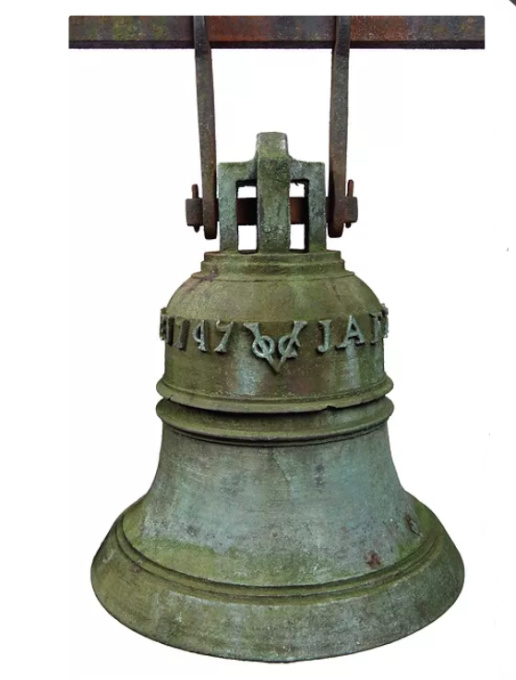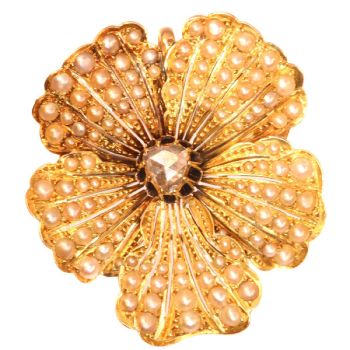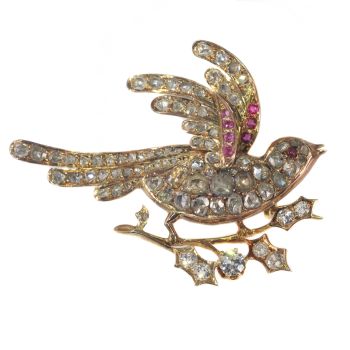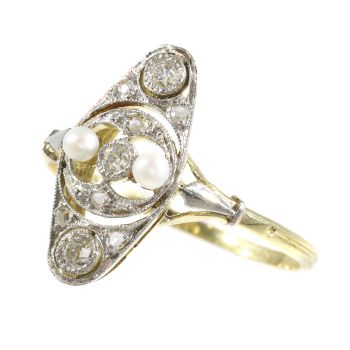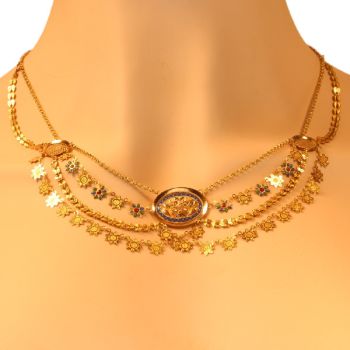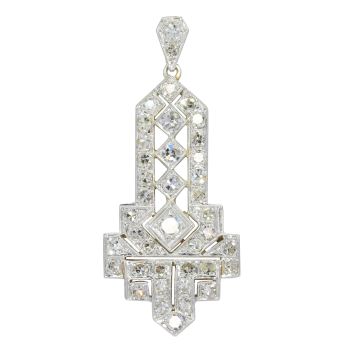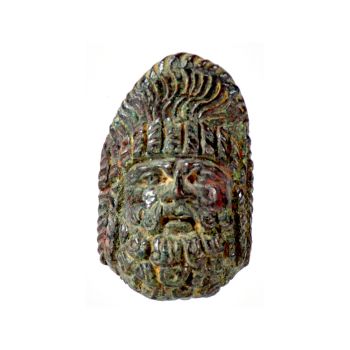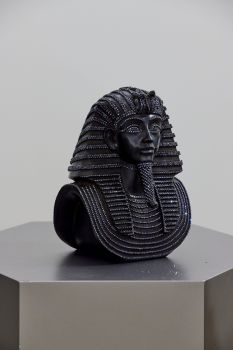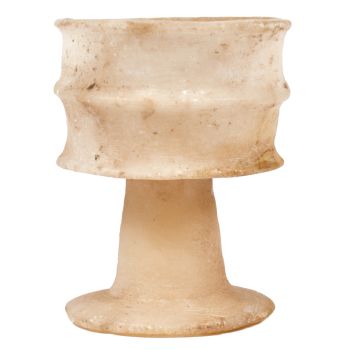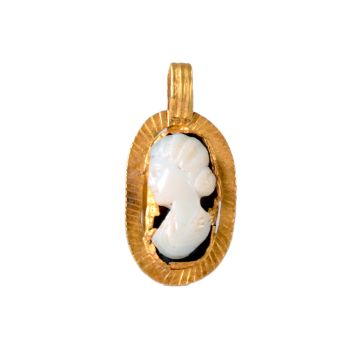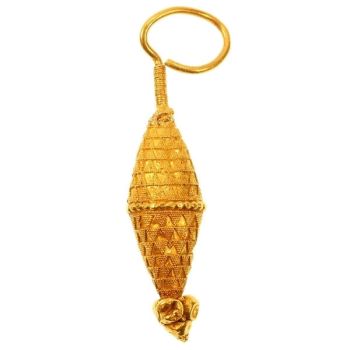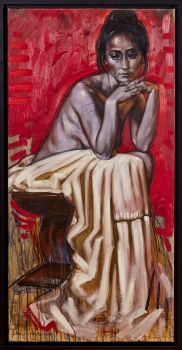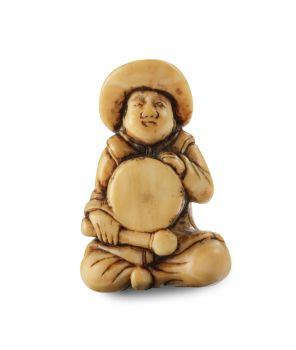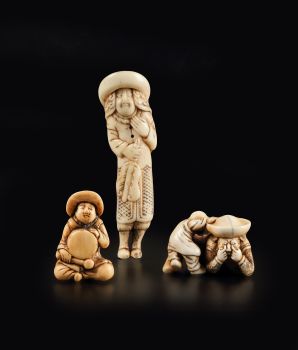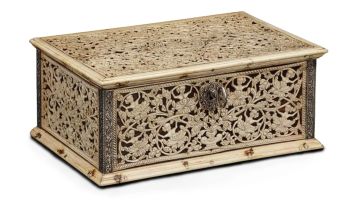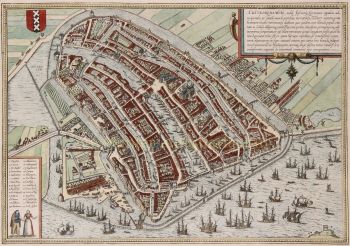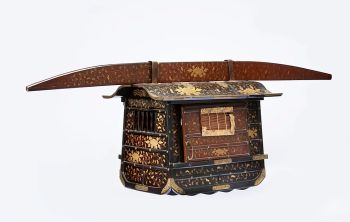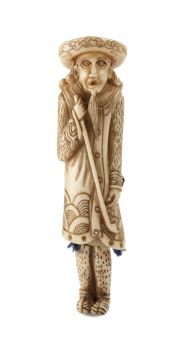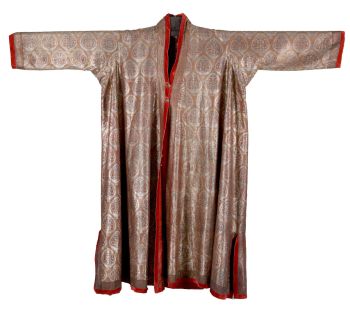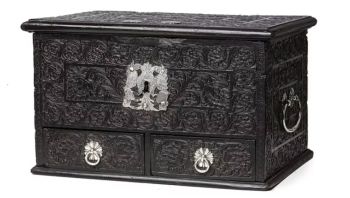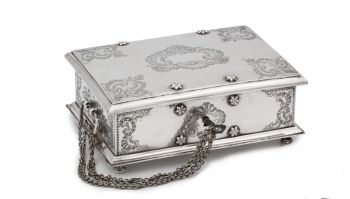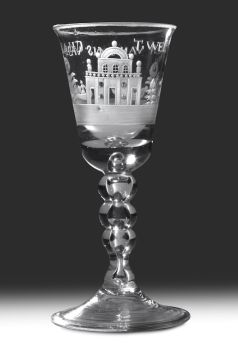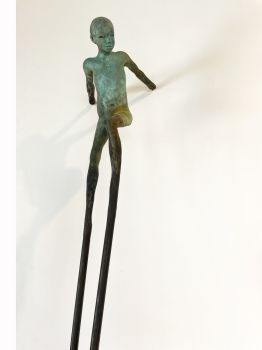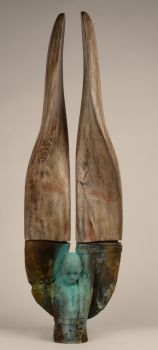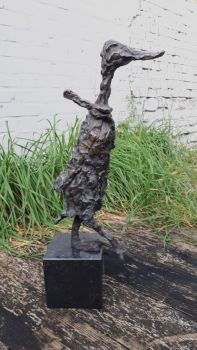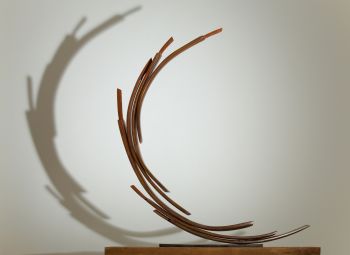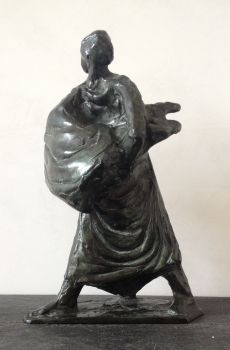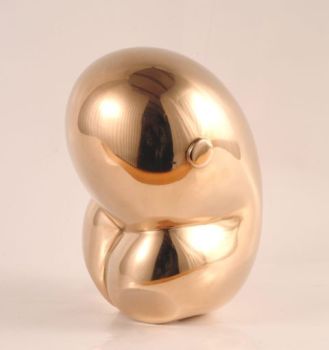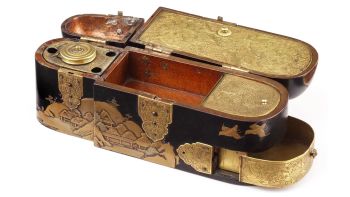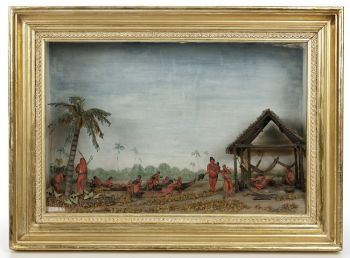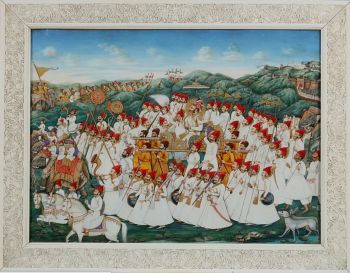The bell of the VOC fortress in Jaffna, Sri Lanka 1747
Unknown artist
BronzeMetal
44 ⨯ 36 cm
Price on request
Zebregs & Röell - Fine Art - Antiques
- About the artwork
The bell of the VOC fortress in Jaffna, Sri Lanka, marked JAFFANAPATNAM Ao 1747 VOC Cast in Jaffna or Colombo, 1747 H. 44 x Diam. 36.5 cm In 1658 Rijcklof van Goens (1619-1682) conquered Jaffnapatnam, a crucial Portuguese town on the North-East coast of Sri Lanka, for the VOC. For an important portrait of him by Jürgen Ovens, see Uit Verre Streken, March 2018, no. 4. Within two decades of conquering, the Dutch built a new fortress at Jaffna overlooking the lagoon, as they considered the old Portuguese structure to be out of date. The new fort, built according to the Dutch notions, was provided with a new church named the Kruys Kerk, which was still in the fort as a museum in the 1990s. The two bells from the old Portuguese Church of the Lady of Miracles, one large and one small with legend ‘Nossa Senhora Dos Milagres de Jafanaptao 1648’ were hung in the new church. The smaller of the two continued to hang in the tower of the Jaffna church, but was eventually removed for safety and lodged in the vestry. The fortress has long been considered by historians and archaeologists to be one of the largest, strongest and best-preserved forts built by a European colonising power in Asia. However, during the severe struggle in the 1990s between the Tamil Tigers and the Sri Lankan army, which had a base in the old Dutch fort, the castle and the Kruys Kerk were largely destroyed. With financial aid from the Netherlands, the castle is being restored, but the church will unfortunately not be rebuilt. The present bell, with the VOC monogram and dated 1747, is likely to have been the bell of the belfry inside the fort or above the gate, used to call people to work, or to call the alarm. A bell with the monogram of a trading company is not very likely to have been a church bell to call people to church. Provenance: Stenton House on the River Tay, near Dunkeld, Perthshire. Stenton Estate belonged to the Scottish Stewart family. The original part of the house dated to the 17th century with extensions in the 18th and 19th centuries. Captain James Stewart (1784-1843), who died in Colombo, possibly took the bell from the fortress and sent it to the family estate in Scotland. The bell remained in Stenton House garden until the house was sold at the end of 2019.
- About the artist
It might happen that an artist or maker is unknown.
Some works are not to be determined by whom it is made or it is made by (a group of) craftsmen. Examples are statues from the Ancient Time, furniture, mirroirs, or signatures that are not clear or readible but as well some works are not signed at all.
As well you can find the following description:
•“Attributed to ….” In their opinion probably a work by the artist, at least in part
•“Studio of ….” or “Workshop of” In their opinion a work executed in the studio or workshop of the artist, possibly under his supervision
•“Circle of ….” In their opinion a work of the period of the artist showing his influence, closely associated with the artist but not necessarily his pupil
•“Style of ….” or “Follower of ….” In their opinion a work executed in the artist’s style but not necessarily by a pupil; may be contemporary or nearly contemporary
•“Manner of ….” In their opinion a work in the style of the artist but of a later date
•“After ….” In their opinion a copy (of any date) of a work of the artist
•“Signed…”, “Dated….” or “Inscribed” In their opinion the work has been signed/dated/inscribed by the artist. The addition of a question mark indicates an element of doubt
•"With signature ….”, “With date ….”, “With inscription….” or “Bears signature/date/inscription” in their opinion the signature/ date/ inscription has been added by someone other than the artist
Are you interested in buying this artwork?
Artwork details
Related artworks
- 1 - 4 / 12
- 1 - 4 / 12
 Curated by
Curated byDanny Bree
Unknown artist
A SMALL IVORY NETSUKE OF A DUTCHMAN WITH A DRUM1750 - 1800
Price on requestZebregs & Röell - Fine Art - Antiques
Unknown artist
AN IVORY NETSUKE OF A DUTCHMAN FROLICKING WITH A SMALL BOY18th century
Price on requestZebregs & Röell - Fine Art - Antiques
Unknown artist
Dutchmen in Miniature18th century
Price on requestZebregs & Röell - Fine Art - Antiques
Unknown artist
Two study portraits of Mas Marco Kartodikromo 1900 - 1950
Price on requestZebregs & Röell - Fine Art - Antiques
Unknown artist
A JAPANESE MODEL OF A NORIMONO, A PALANQUIN1650 - 1700
Price on requestZebregs & Röell - Fine Art - Antiques
Cornelis Anthonisz Theunissen
VERY RARE FIRST PRINTED MAP OF AMSTERDAM, A CITY ON THE RISE1544
€ 175.000Inter-Antiquariaat Mefferdt & De Jonge
 Curated by
Curated byDanny Bree
1 - 4 / 24- 1 - 4 / 24
Unknown artist
A rare Japanese export lacquer medical instrument box1650 - 1700
Price on requestZebregs & Röell - Fine Art - Antiques
Wolfgang Hugo Rheinhold
“Eritis sicut Deus”1900 - 1950
Price on requestZebregs & Röell - Fine Art - Antiques
Unknown artist
A Dutch colonial Indonesian betel box with gold mounts1750 - 1800
Price on requestZebregs & Röell - Fine Art - Antiques
Unknown artist
IMPORTANT AND RARE LARGE INDIAN 'COMPANY STYLE' PAINTING ON IVORY DEPICTING A PARADE1850 - 1900
Price on requestZebregs & Röell - Fine Art - Antiques
 Curated by
Curated byDanny Bree
1 - 4 / 12

